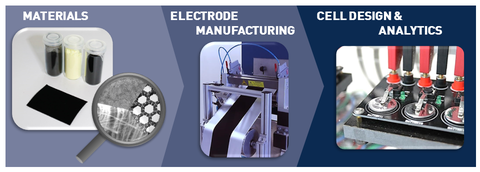Nitrogen containing carbons for high capacitive cycle-stable Lithium-Sulfur cathodes (StickLiS)
Duration: January 2016 - December 2018
Compared to state of the art Lithium Ion Batteries, Lithium Sulfur Batteries combine a potentially higher energy density with low material costs. However, cycle stability is still a challenge that needs to be addressed. Recent Li-S prototype cells reach 350 Wh/kg but show a significant capacity fading after 50 cycles. Main reason for this effect is mainly the generation of side products emerging during the discharge cycle, so-called polysulfides. Aim of this project is to minimize this effect by the developing novel conductive materials where some carbon atoms are substituted by nitrogen atoms (nitrogen doping). These atoms are able to bind the polysulfides and minimize the undesired transport to the anode. In this work, three different carbon-based types of substances will be investigated for the above mentioned aim. Moreover, by the synergetic working plan of three different affiliations, basic understanding of the highly complex electrochemical mechanisms during charge and discharge will be generated. With this strategy, side reactions inhibiting the commercial success of Li-S batteries will be minimized.
This project has received funding from the Federal Ministry of Education and Research (BMBF), support code: 03XP0030A Partner:
• Fraunhofer IWS Dresden http://www.iws.fraunhofer.de/en.html
• Max-Planck-Institut for Solid State Research Stuttgart http://www.fkf.mpg.de/en


